Hey, let’s tackle spotting nutrient deficiencies in your plants. Start by checking those leaves—yellowing can mean a nitrogen shortage, often fixed with a 10-10-10 fertilizer within a week. Notice anything off, like pale edges or stunted growth? These clues point to specific issues we’ll break down next, so stick around to learn the fixes.
Contents
Yellowing Leaves
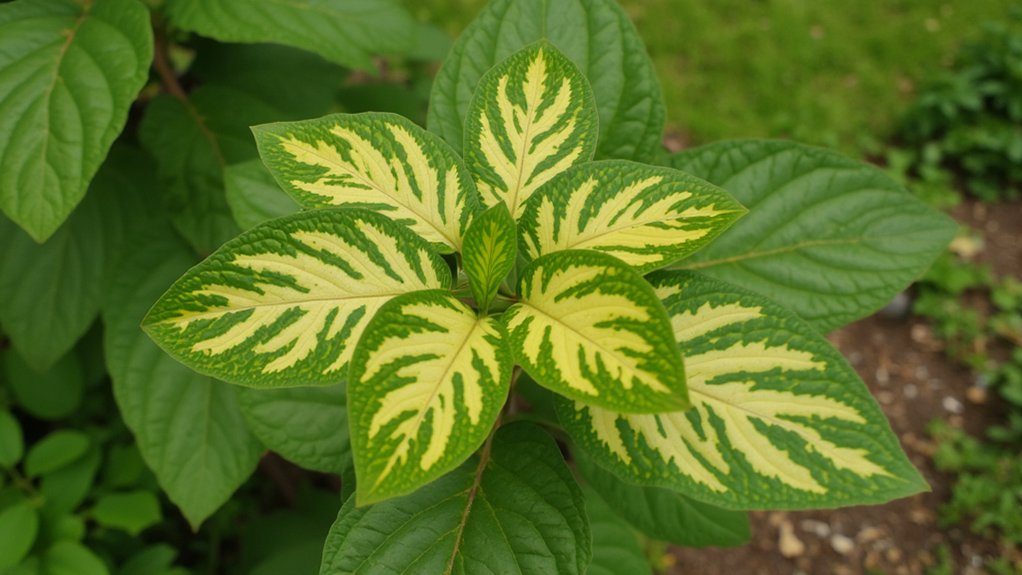
While you’re inspecting your plants, you might notice some leaves turning yellow, a common sign of trouble. Don’t panic; this often points to a nutrient issue. Let’s figure it out together with a few simple checks.
Start by looking at the pattern—yellowing all over usually means a nitrogen shortage. If it’s just older leaves, you’re likely low on this key nutrient. Grab a balanced fertilizer, like a 10-10-10 mix, and apply it per the label, usually 1 tablespoon per gallon of water.
Next, check your watering. Overdoing it can wash nutrients away, so aim for consistent moisture, about 1 inch per week. Keep a close eye for changes over 7-10 days. If yellowing persists, we’ll dig deeper into solutions.
Chlorotic Leaf Margins
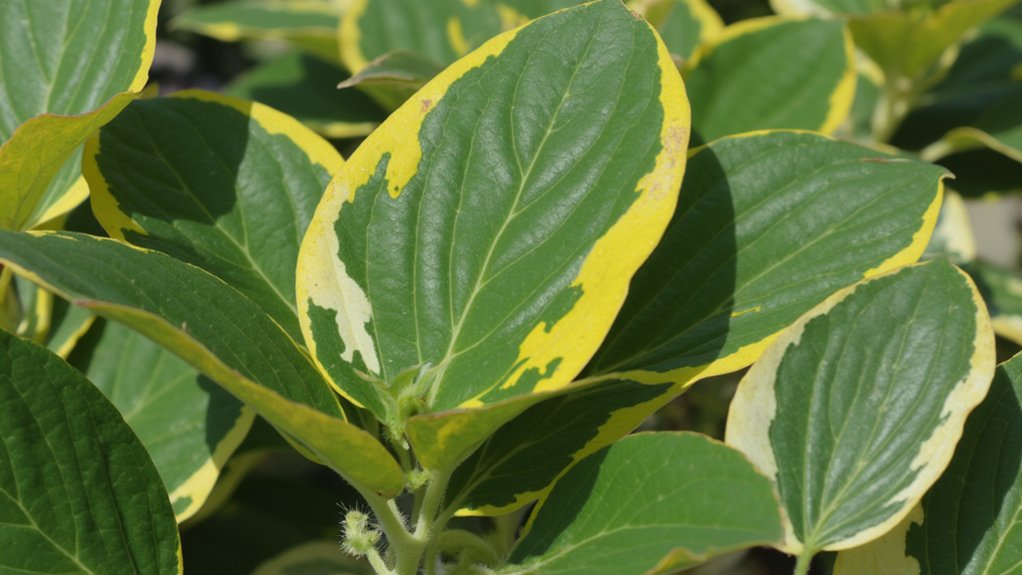
As you examine your plants, you might spot leaves with pale or yellowish edges, a condition called chlorotic leaf margins. This often signals a nutrient issue, specifically a lack of potassium or magnesium. Don’t ignore it; those margins won’t fix themselves.
Let’s troubleshoot this together. Start by checking your soil’s pH—aim for a range of 6.0 to 7.0, as imbalances can lock out nutrients. If it’s off, adjust with lime or sulfur, following package instructions. Next, apply a balanced fertilizer with potassium and magnesium, like a 10-10-10 mix, using about 1 tablespoon per gallon of water.
Monitor the leaves over 7-10 days. If the yellowing persists, test your soil at a local extension office for precise deficiencies. Keep at it!
Stunted Growth
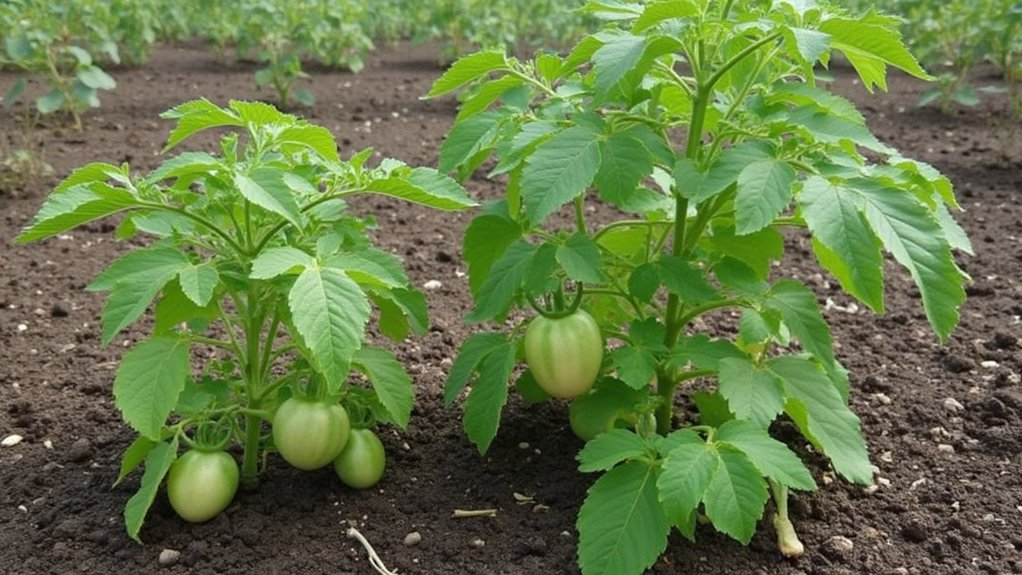
Take a close look at your plants—do they seem unusually small or slow to grow? If so, you’re likely dealing with stunted growth, a common sign of nutrient deficiencies. It’s frustrating, but you can fix this with a bit of detective work.
Start by checking if your plants are getting enough nitrogen, a key nutrient for growth. Without it, they might only reach half their expected height, like a tomato plant stuck at 6 inches after a month. Test your soil with a kit—look for nitrogen levels below 20 ppm, and if low, apply a balanced 10-10-10 fertilizer.
Monitor progress over two weeks, adjusting as needed. You’ve got this—watch those plants perk up and stretch skyward!
Weak Stem Development
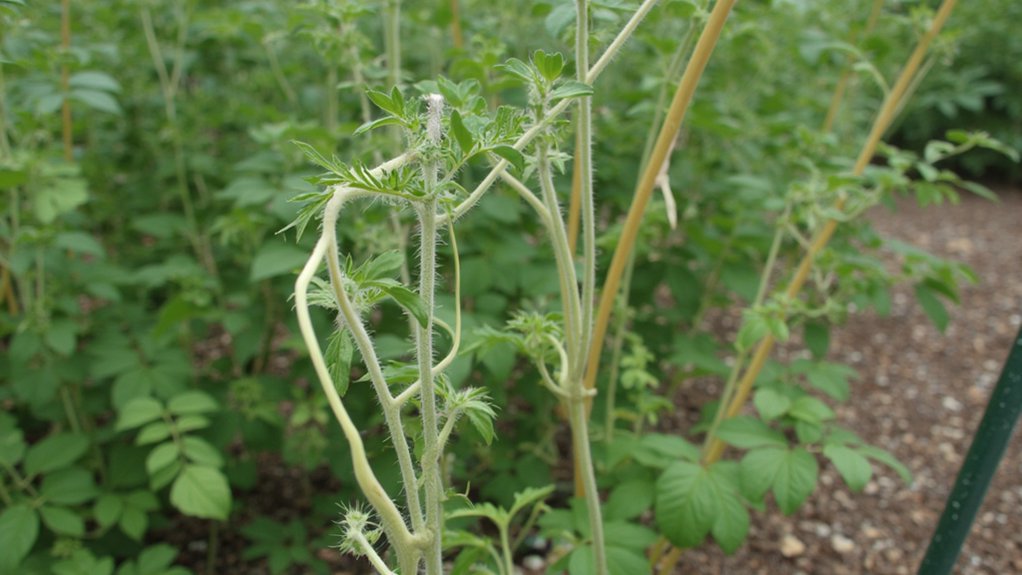
Notice how your plants stand—or rather, slump? If their stems look thin, bend easily, or can’t support leaves, you’re likely dealing with weak stem development. This often signals a nutrient deficiency, especially potassium or calcium.
Start by checking your soil’s nutrient levels with a test kit, available at most garden stores. Low potassium means stems struggle to stay rigid, so add a fertilizer with a high middle number, like 10-20-10, following package directions. For calcium, mix in crushed eggshells—about 1 cup per square foot—and water thoroughly. Monitor progress over two weeks; stems should thicken. If they don’t, adjust watering, as overwatering can worsen the issue. Keep observing, and you’ll get those plants standing tall again!
Purple Leaf Discoloration
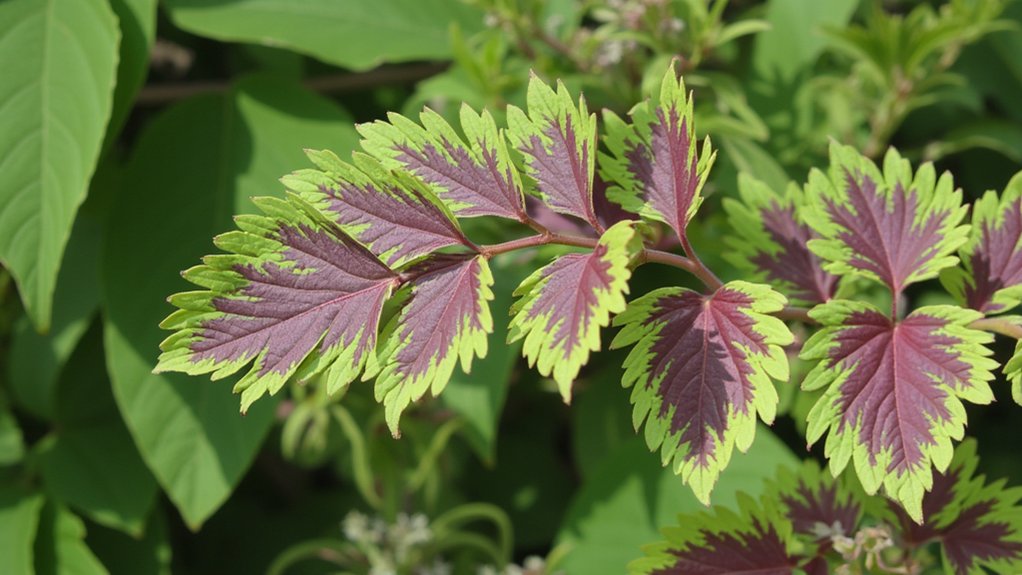
Ever spotted an odd purple tint on your plant’s leaves? Don’t worry, it’s often a sign of phosphorus deficiency, and you’ve got this. Phosphorus helps with energy transfer, so when it’s lacking, leaves can turn purplish, especially on the undersides.
Check your soil first, as low phosphorus levels are the usual culprit. Grab a soil test kit from a garden store, and if levels are below 20 ppm, it’s time to act. Add a phosphorus-rich fertilizer, like a 10-20-10 mix, following the package for exact amounts.
Monitor your plant over the next 7-10 days for changes. If the purple fades, you’re on track; if not, retest the soil. Keep watering balanced, about 1 inch weekly, to help nutrient uptake.
Brown Leaf Spots
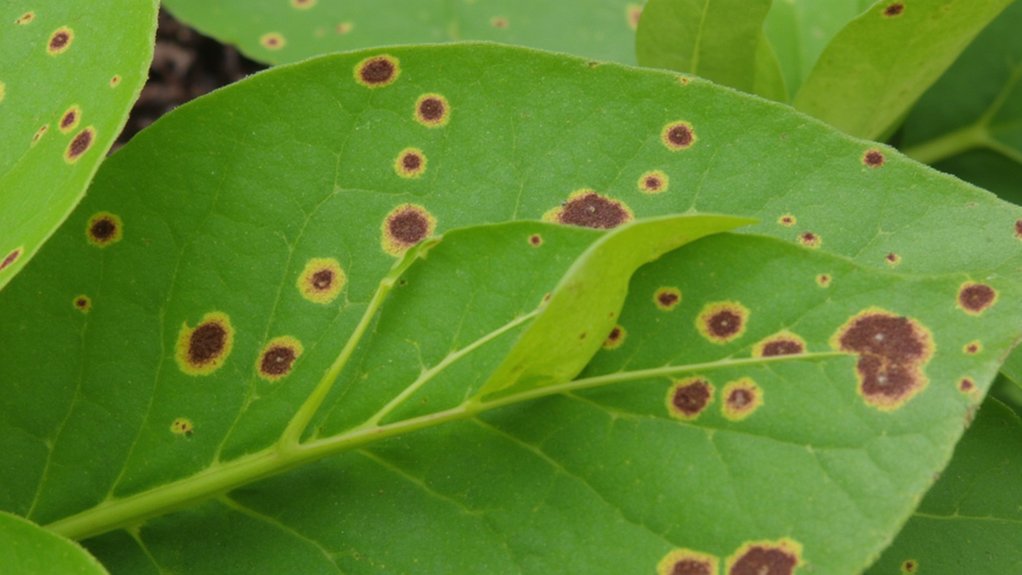
Spotting brown leaf spots on your plant can be a bit of a puzzle, especially after tackling purple discoloration. Don’t worry, though; let’s figure this out together. These spots often signal a potassium deficiency, showing up as small, dark patches, usually 1-3 millimeters wide, along leaf edges.
First, check your watering habits—are you overdoing it? Excess moisture can worsen nutrient uptake, so cut back if the soil’s soggy. Then, grab a balanced fertilizer, like a 10-10-10 mix, and apply it as directed, about 1 tablespoon per gallon of water, every 2 weeks.
Keep an eye on those spots over 7-10 days. If they shrink, you’re on track; if not, test your soil’s pH—it should be between 6.0 and 7.0 for most plants.
Necrotic Leaf Tips
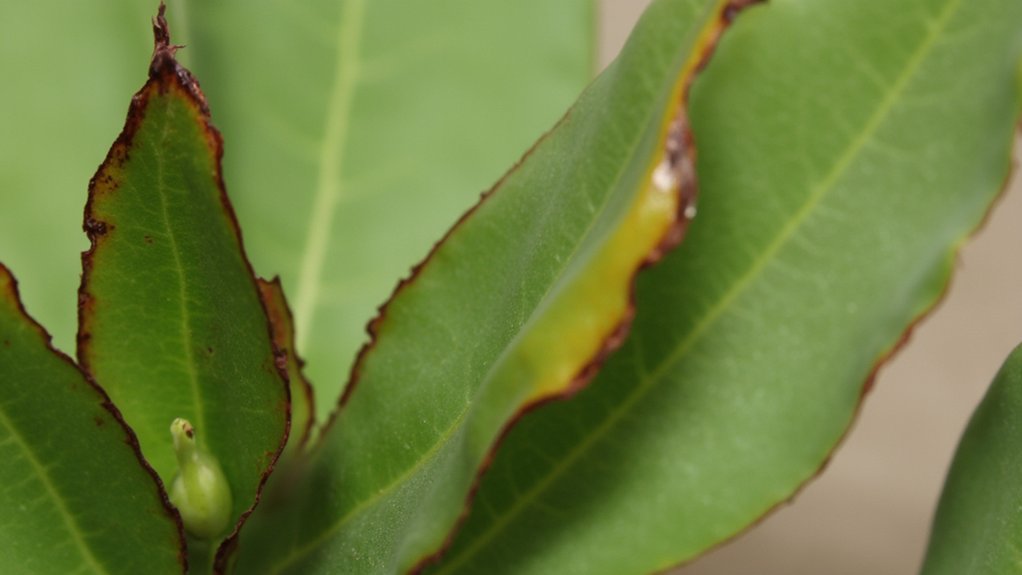
While you’re inspecting your plants, you might come across necrotic leaf tips, those pesky dead, brownish ends. They’re often a sign of nutrient issues, specifically a lack of potassium. Don’t ignore this; it can stunt growth if unchecked.
Look closely at the tips; if they’re dry, crispy, and extend about 1-2 millimeters inward, that’s a classic clue. Potassium helps with water regulation, so a deficiency hits the edges first. Check your soil’s nutrient balance using a test kit, available at most garden stores.
To fix this, add a potassium-rich fertilizer, like one with a 0-0-20 ratio, following the label’s instructions. Reapply every 2 weeks until you see improvement. Keep watering consistent, about 1 inch weekly, to aid absorption.
Pale Leaf Veins
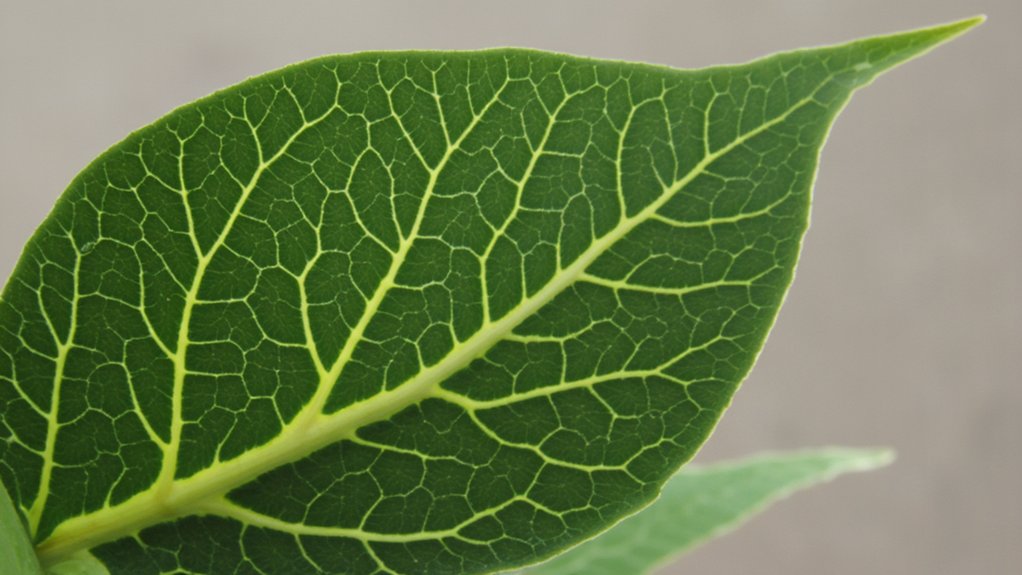
As you examine your plants, you might notice pale leaf veins, a subtle but telling sign of trouble. This often points to iron deficiency, a common issue in alkaline soils. Don’t ignore it; your plant’s struggling to make chlorophyll.
Check the soil pH first, aiming for a range of 6.0 to 6.5. If it’s above 7.0, iron gets locked out, so lower it with sulfur or iron chelates. Apply about 1 tablespoon of chelated iron per gallon of water, drenching the soil every 2 weeks until color returns.
Keep an eye on new growth for improvement within 7-10 days. If veins stay pale, test again, and adjust. You’re the detective here, so dig into the root of this problem!
Distorted Leaf Shape
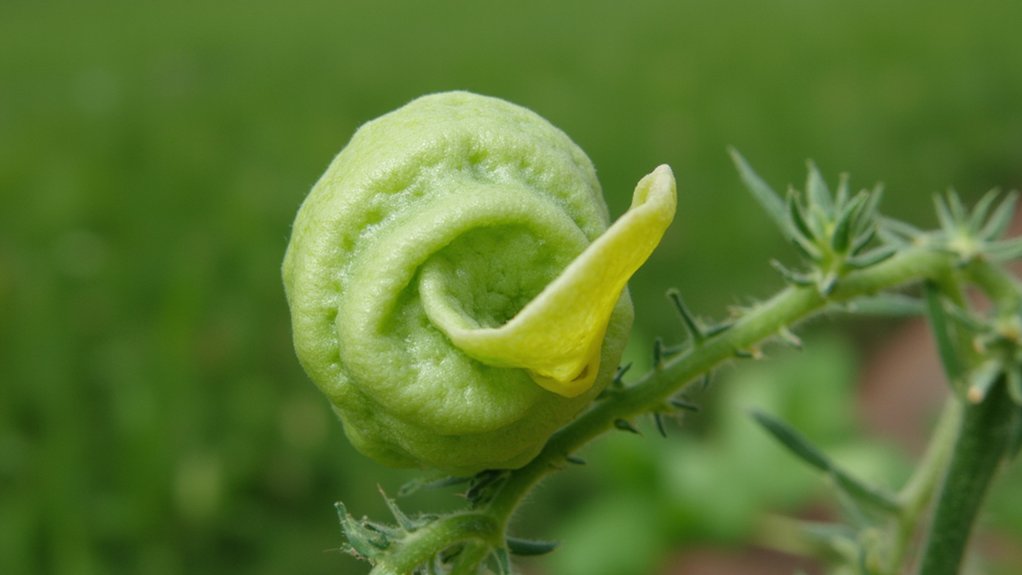
If you notice your plant’s leaves twisting or curling in odd ways, you’ve likely stumbled on a nutrient issue. Distorted leaf shape often signals a lack of calcium or boron, messing with cell wall strength. Don’t ignore it; this ain’t just a quirky look.
Start by checking your soil pH—aim for 6.0 to 7.0, as extremes lock out nutrients. If it’s off, adjust with lime or sulfur, following package directions. Next, add a balanced fertilizer with micronutrients, applying 1 tablespoon per gallon of water every 2 weeks.
Watch your plant closely for changes within 7-10 days. If leaves don’t straighten, test soil for specific deficiencies. You’ve got this—just keep observing, tweaking, and giving those plants what they’re craving.
Reduced Flowering Output
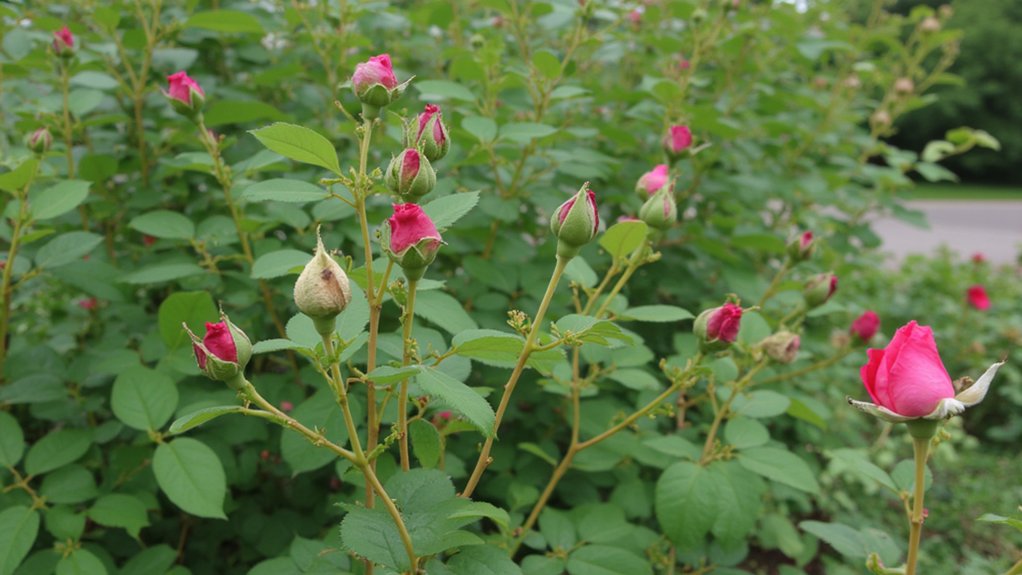
Hey, let’s shift gears from funky leaf shapes to another sneaky sign of nutrient trouble—reduced flowering output. If your plants aren’t blooming as they should, listen up. Nutrient deficiencies, especially in phosphorus or potassium, often mess with flower production.
Check your plant’s blooms first—are they sparse or delayed? Phosphorus shortages can cut flowering by 50%, so inspect for weak stems too. Add a balanced fertilizer, like a 10-10-10 mix, every two weeks until buds perk up.
Don’t overdo it, though; stick to label instructions. Also, test your soil pH—aim for 6.0 to 7.0 for most flowering plants. If it’s off, adjust with lime or sulfur as needed. Keep watching those blooms, and you’ll spot improvements within a month.
